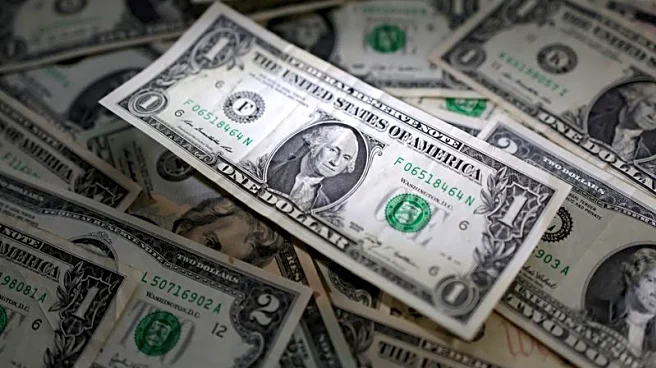What's Happening?
The U.S. dollar experienced a decline against the euro while slightly rising against the yen, influenced by ongoing U.S.-China tensions and dovish remarks from Federal Reserve officials. Analysts anticipate support for the yen due to potential Fed rate
cuts and increased market volatility, which typically benefits safe-haven assets. U.S. Treasury yields remain low, adding pressure on the dollar as investors consider the impact of a prolonged government shutdown. The Fed's Beige Book indicates emerging economic weaknesses, including layoffs and reduced consumer spending. Meanwhile, China's expansion of rare earth export controls has drawn criticism from U.S. officials, raising concerns about global supply chain disruptions.
Why It's Important?
The dollar's fluctuation reflects broader economic uncertainties, including potential Fed rate cuts and geopolitical tensions with China. Rare earths are vital for various industries, and China's export controls could disrupt global supply chains, affecting manufacturing and technology sectors. The U.S. dollar's performance is crucial for international trade and investment, influencing economic stability and growth. The situation highlights the interconnectedness of global economies and the impact of geopolitical actions on financial markets.
What's Next?
Investors will closely monitor developments in U.S.-China trade relations and potential Fed policy changes. The upcoming meeting between President Trump and Chinese President Xi Jinping may offer insights into future trade negotiations. Additionally, the Fed's approach to interest rates and quantitative easing will be pivotal in shaping economic forecasts and market reactions. Stakeholders will assess the implications of China's rare earth export controls on global industries and supply chains.















